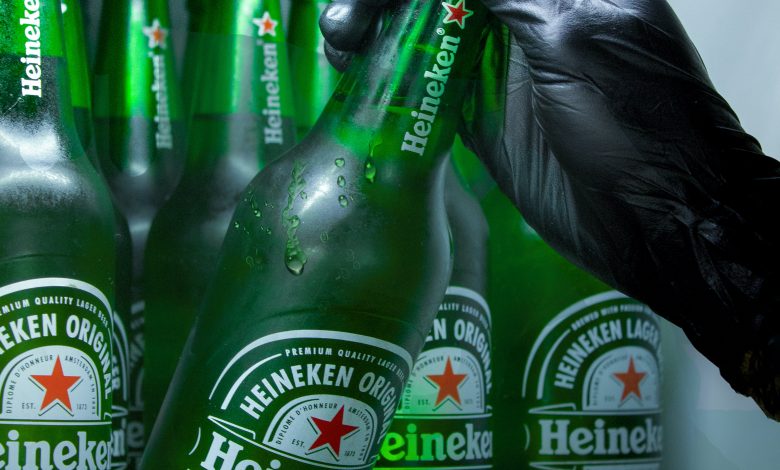Latest Cold Crashing Guide for Your Home

Most times, home brewers remain puzzled over the murky appearance of their self-brewed beer, despite all efforts that it should drop bright. In fact, many have quit the venture all because of this. Agreed, most of us would want to take something clear and healthful, something we would be confident about, since whatever goes down into our guts has a huge impact on our health and living. Maybe a guide to cold crashing might help in this case.
After all, a bottle of beer in your hand is a fantasy, and fantasies are full of secrets. Yes, each quality bottle of beer you’re bearing in your hand has its secrets. And cold crashing is one of the best keys to brewing clear beer.
After you’ve prepared your beer, it’s usually very hot. Consequently, this is not the best time for kegging the beer or bottling it. This method applies to your brewing best, especially if the beer production process doesn’t involve either seaweed or gut.
The million dollar question here is, how do you cold crash the beer?
Cold Space Cold Crashing Method
While some home brewers have brewing equipment such as a glycol-jacketed cylindroconical, others don’t. If you’re one of those who don’t, you may need a brewing space for cold crashing. In this case, you can make use of a vacant space at home, especially your garage.
A refrigerator can work for cold crashing, especially if it’s not the one you store beverages and food in, as it’s important not to interrupt the cooling process. This is one of the reasons some people prefer using old refrigerators for the cold-crashing process. The ideal temperature for cold crashing is 35-40 degrees Fahrenheit, a bit above the cooling level.
Although cold crashing would not immediately give you 100% beer clarity, as time goes on, your beer clears up. The particles come together to sit at the bottom of the bottle or keg, and the beer becomes clearer in your container. In this case, you would probably need a carboy.
Towel and Ice Cold Crashing Method
This method applies to anyone who has a low budget and doesn’t have either a spare refrigerator or garage for the cold crashing process. This method involves filling a large bowl (a bath tub could work in this case) with ice first. Let there be some water in the tub, and then wrap the beer container with a piece of flat towel and set it in the tub such that every part of the towel soaks in the water. It’s important to add ice every mid day, since the ice melts. Most home brewers wonder why you use the towel to wrap the bottle. But without the towel, the cold may not reach the top of the bottle. If this is the case, it would be difficult to achieve the purpose of cold crashing.
Cool Box Cold Crashing Method
This involves using ice too. You fill up the box with ice and refill it every 12 hours. As the towel method, this may not be as effective as using the refrigerator, but it reduces the temperature too. Apart from the refrigerator method, most of these methods require much waiting time, which many cannot spare as a result of other activities they consider more pressing.

How Long Do You Have to Wait to Cold Crash Your Beer?
In cold crashing, patience is very important. You cannot achieve your purpose for cold crashing beer if you cannot wait for 48 to 72 hours. In fact, some brewers wait for as long as a week, as the beer passes through a repeated process between cold crashing and racking. With carbonation, your cold crashing requires extra time, and if you can wait, you will enjoy the fruit of your labor. And the fact that cold crashing is highly affordable and equally effective is part of the reasons why most go for it despite the waiting.
Why Do You Need to Cold Crash Your Beer?
Most people who local brew go for cold crashing, which brews the question “why“ in the mind. The first thing that appeals to humans generally is what we see. If two bottles of beer are placed right in your front and one is filled with particles while the other is crystal clear, there’s no way you can go for the one filled with particles, unless it’s traditionally made so. So the primary purpose of cold crashing your locally brewed beer is to achieve clarity.
Appealing taste and nice color are parts of the reasons some home brewers go for cold crashing too. But there exists a more exciting purpose that’s worth looking out for. What about racking? Cold crashing makes racking really easy for you because particles which could have blocked the dip tube had coagulated and settled at the bottom of the container prior to the racking stage.
When Should You Cold Crash?
The recommended time to cold crash your beer is after it has fermented and before you package it. The main reason for cold crashing after beer fermentation is that the yeast may gather together with the debris such that no particle flows with the beer in the bottle.
Challenges in Cold Crashing
Anything of high relevance as such usually has some hurdles. If you can cross these hurdles, then you will achieve a desired result. There are certain challenges you should be familiar with if you want to cold crash your home brewed beer.
The most challenging aspect of cold crashing is the stress of changing the ice. Since this should be done every 12 hours throughout the period of cold crashing, you may have to stay awake to achieve what you’re aiming for. Even if you’re using the refrigerator method, you have to stay up and awake to regulate the temperature
Waiting is side-by-side with changing the ice in your carboy or fermentation vessel. In the brewing process, you have to wait and watch your time to replace the ice and also wait for 48 to 72 hours before you can store your beer at all. This has put many people off to the extent of using additives rather than cold crashing.
Another challenge about this method is that your beer tends to be exposed to fluid when air-locked in whatever container you’re using. If you use a single air-locked container, it’s possible oxygen infiltrates and alters the aroma of the beer. Using a foil that you have sanitized could help dry up the liquid from the container. Some people do dry hopping after cold crashing their beer, and it proves to be effective too, as it preserves the aroma of the beer, thereby helping you to retrieve the taste that could have reduced while cold crashing the beer.

How Clear Should Cold Crashed Beer Be?
Many fans of beer won’t feel great drinking particles alongside their beer. Thereby, home brewers are usually concerned about how clear their beer should look. Well, you must have considered clarity really important before going for cold crashing in the first place. But don’t strain too much over this. As long as the yeasts in the beer have flocculated at the bottom of your beer bottle or keg, it’s clear enough.
The truth is that clarity varies according to individuals’ personal preferences. What’s clear to A may not be so clear to B. So once it’s clear enough for you, then you’re good to go. Apparently, the clarity matters as much as other hygiene processes that apply in the process of production. But after waiting for the recommended period of cold crashing, your beer is safe to drink. Suffice to say that you should be more concerned about the hygiene of processing ingredients and vessels than clarity, which is subjective.
Successfully Cold Crashing Your Home Brew
Home brewing is on the rise, owing to the fact that it allows for experimentation of various kinds. It’s really what many people have fantasized about. Cold crashing remains one of the most reliable methods that home brewers use in producing their beer. And we have raised many concerns, which range from how to cold crash your beer to how clear the beer should look.
While discussing how cold crashing works, we mentioned the effective cold crashing methods you can use, such as the cold space method, the refrigerator method, the cold bag method, and the towel and ice method, as well as highlighted the challenges specific to each method.
Since there must be a reason for every action, clarity, which is the purpose of using this method, is largely discussed. For instance, a part focuses on how clear your beer should be, which must have bothered some home brewers. Furthermore, a section of this article has been dedicated to the challenges you’re likely to encounter if you’re new to the cold crashing method and would like to adopt it anytime.
In a nutshell, cold crashing gives you the clarity, color, and crispiness you want in the beer. It also makes racking easy, only if you can leap over the few hurdles.



